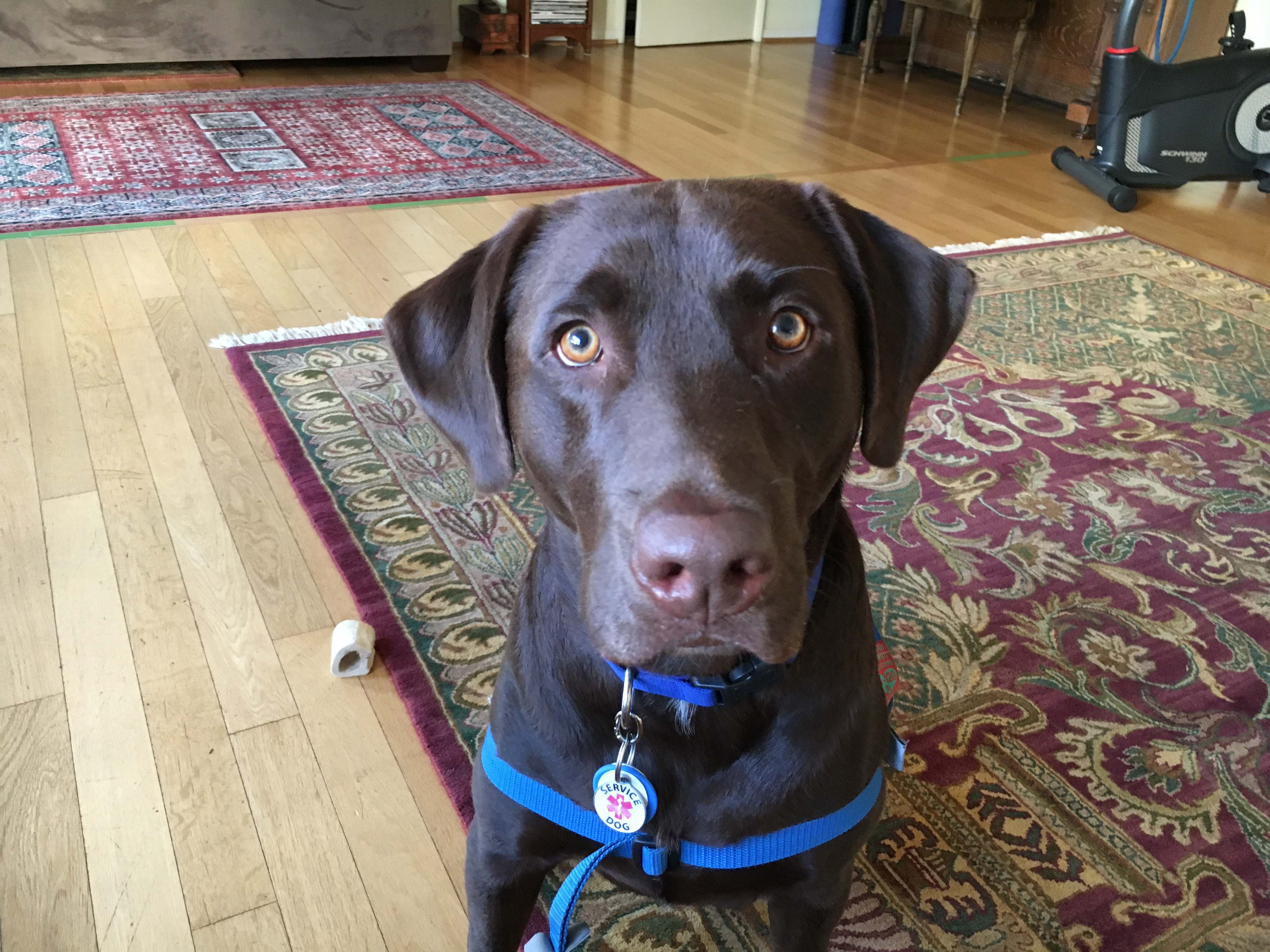Training a Santa Monica Lab to Stop Reacting to Dogs When on Leash
By: David Codr
Published Date: December 1, 2017
For this Santa Monica dog training session, we taught 2 year-old Chocolate Lab Jax to focus get him to stop reacting to dogs on walks or those passing by his home.
While Jax did a lot of barking during the greeting, his energy level was lower than I expected. He also showed some restraint; although he jumped up, he avoided making contact with me.
After chatting with his guardian, I learned Jax was sent away for some dog training. But the longer we chatted, the more indicators pointed to “traditional” force and correction based training.
Dog behavior expert and reputable trainers started moving away from force and correction based training a few decades ago as these methods often come with unintended consequences. When I was going over my positive dog training method of teaching him to stay, he jerked away when I made a small hand movement combined with the command word of “stay.”
When I pointed this out to his guardian, she mentioned the trainers used lash corrections any time Jax moved out of his stay. Seeing a dog recoil this way is reason enough for me to avoid force based training. The other is it often introduces that aggression is a way to deal with those who have less status than the dog has.
I suggested the guardian change the command word to “wait” then walked her through an all positive dog training approach. Afterwords, we spent a little more time discussing the benefits of force free dog training which his guardian was very in favor of.
Teaching Jax to stay this way will take a little practice, but his beautiful, eager to please personality will really shine with this approach.
I also learned that Jax really didnt have any structure in place. This had confused the dog into thinking he needed to watch over or protect his guardian from other dogs. Additionally, the guardian petted Jax whenever he demanded and without any structure. This had resulted in Jax perceiving his guardian as someone he needed to protect.
So we have a dog with insecurities, that is trying to lead a human who doesnt listen to his directives as she doesnt see him as an authority figure. This confusion was contributing to Jax’s anxiety and causing his guardian to become frustrated and concerned with his escalating reactivity and aggression to some dogs on walks.
Another one of the reasons I dislike force based training is it often impacts a dog’s self esteem and that was the case here. This lower self esteem had caused Jax to become more reactive. As a dog behaviorist, I have found when it comes to reactive or aggressive dogs, insecurity is a big contributing factor.
I knew I needed to both build back up Jax’s self esteem while simultaneously helping the guardian assume a leadership status in the dog’s eyes in order to resolve these dog behavior problems.
We spent about an hour going over ways to add structure to petting him as well as a neat way to pet a dog to motivate it to engage in desired behaviors. I also suggested a number of rules and ways to enforce them. These rules can help the dog see itself in more of a follower status, thereby reducing its perception of the need to “protect” his guardian.
With the new rules and structure in place, I was ready to address Jax’s leash aggression and dog reactivity issues. Because dogs can only focus on one thing at a time, most dog behavior experts want to give the guardian the ability to redirect a dog’s attention on command. To accomplish this, I walked Jax’s guardian through a focus exercise.
Being able to redirect Jax attention will be a powerful tool for his guardian and help her stop aggressive behavior before it gets a chance to really start. Its going to take a lot of practice, but fortunately this is a really easy exercise. The key is to practice the focus in short bursts, multiple times throughs the day. This is best when its done every day for a week to 10 days until the dog can focus for up to 20 seconds in any location and situation. Being able to redirect your dog’s attention is a great approach when it comes to eliminating dog aggression.
Im hoping this focus exercise and the rules and structure help him get over the feeling he needs to protect his human from unknown dogs. But because of Jax insecurities, I think he may need a follow up session or two to address any issues the techniques we introduced in this session don’t solve.
We wrapped things up by shooting a roadmap to success video summarizing all the positive dog training tips and secrets we covered in this in home dog training session.
Categorized in: Dog Behavior


